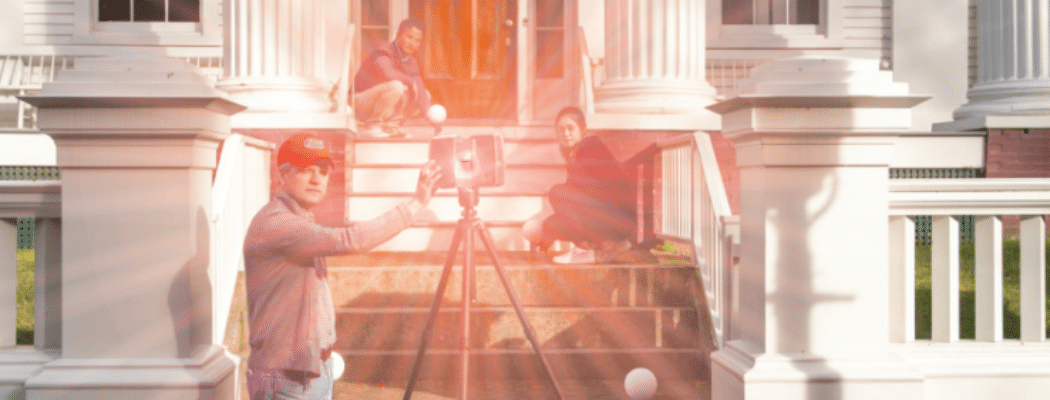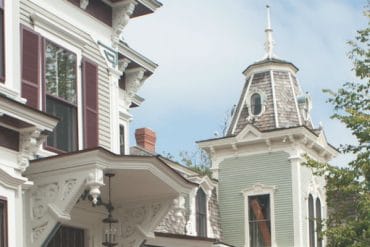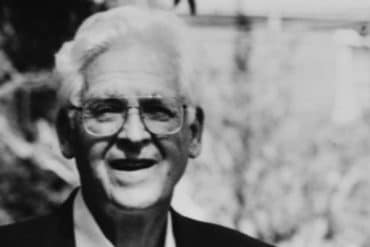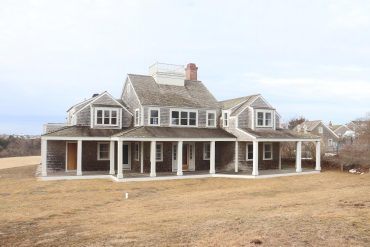How cutting-edge laser technology is preserving Nantucket history.
You’ve probably seen them around town. They comb the island in Florida Gators caps and T-shirts, wielding high-tech devices on tripods, ghost-white spheres and drones worthy of the starship Enterprise. These curious bands of students are affiliated with the University of Florida and are using the latest laser-scanning technology to build a virtual model of Nantucket that could have a big impact on the future of the island.
 Through UF’s research and teaching focused Preservation Institute Nantucket (PIN), every summer for forty-six years, aspiring preservationists from around the globe have used Nantucket as a living laboratory, measuring, photographing, and drawing historic architecture and heritage sites. “The island has become a global case study,” says Morris Hylton III, who directs the University of Florida’s Historic Preservation Program in Gainesville. At an international conference in India last December, attendees were abuzz about Nantucket, possibly one of the most-studied sites on the planet.
Through UF’s research and teaching focused Preservation Institute Nantucket (PIN), every summer for forty-six years, aspiring preservationists from around the globe have used Nantucket as a living laboratory, measuring, photographing, and drawing historic architecture and heritage sites. “The island has become a global case study,” says Morris Hylton III, who directs the University of Florida’s Historic Preservation Program in Gainesville. At an international conference in India last December, attendees were abuzz about Nantucket, possibly one of the most-studied sites on the planet.
Five years ago, the UF program acquired laser scanners, drones and other digital technology for a new initiative called Envision Nantucket. Using white spheres as targets, the scanners capture and map millions of tiny points on the surfaces of objects, creating a matrix of data in space. Computers then render a digital model, accurate to within millimeters, in a fraction of the time of traditional methods.
 Natural disasters, war and other perils are sending preservationists scrambling to laser-scan ancient buddhas and Roman-era temples before they’re destroyed. Hylton and UF have documented sites from Myanmar to Miami. But the core of the program has always been Nantucket. A digital model of the waterfront, for instance, enables 3-D visualization of flooding, storm surge and sea-level rise. In light of recent winter floods, these models are invaluable tools for vulnerability assessment and adaptation strategies, says Hylton.
Natural disasters, war and other perils are sending preservationists scrambling to laser-scan ancient buddhas and Roman-era temples before they’re destroyed. Hylton and UF have documented sites from Myanmar to Miami. But the core of the program has always been Nantucket. A digital model of the waterfront, for instance, enables 3-D visualization of flooding, storm surge and sea-level rise. In light of recent winter floods, these models are invaluable tools for vulnerability assessment and adaptation strategies, says Hylton.
A video animation of the virtual recreation of the Greek Revival mansion built by whaling merchant William Hadwen, for instance, floats the viewer through rooms with visible details as precise as delicately patterned wallpaper, gold-filigree picture frames and carved swirls within the crown molding.
The notion of capturing elements of Nantucket’s charm like a beetle in amber originated with businessman and philanthropist Walter Beinecke Jr. In 1969, Beinecke, who would be credited with reviving Nantucket’s then-decaying waterfront, met F. Blair Reeves, a UF architecture professor working with a federal historic preservation program.
At Beinecke’s urging, Reeves returned to the island with students, launching what would become the nation’s oldest continuously operating field school for historic preservation. More recently, a $60,000 grant from Beinecke’s family foundation, the Osceola Foundation, funded Envision Nantucket.
More than seven hundred students representing 120 institutions worldwide have cycled through the Preservation Institute since 1972. The result of their labor is stored on University of Florida servers and at the Library of Congress. This year, the town of Nantucket is contributing funding for additional laser scanning. To date, in addition to Hadwen House, the African Meeting House, Boston Higginbotham House, Cottage Hospital, the Macy-Christian House, the Maria Mitchell Association, the Pacific Club and the Unitarian Church have been scanned, as well as exterior views of ‘Sconset and lower and upper Main Street.
 Now owned by the Nantucket Historical Association, the Hadwen House on upper Main Street will be safely frozen in 1849, but Michael May, executive director of the Nantucket Preservation Trust, says other historical residential interiors are at risk. In 2000, Nantucket was placed on the National Trust for Historic Preservation’s short list of most endangered historic places, says May, noting that every year, ten to twenty interiors of the island’s 800 pre-Civil War structures are lost as developers and owners replace original details with modern elements.
Now owned by the Nantucket Historical Association, the Hadwen House on upper Main Street will be safely frozen in 1849, but Michael May, executive director of the Nantucket Preservation Trust, says other historical residential interiors are at risk. In 2000, Nantucket was placed on the National Trust for Historic Preservation’s short list of most endangered historic places, says May, noting that every year, ten to twenty interiors of the island’s 800 pre-Civil War structures are lost as developers and owners replace original details with modern elements.
May is heartened by the fact that a dozen historic residence interiors have been scanned as part of Envision Nantucket. If a residence goes on the market, the laser scan will provide a template for a historically accurate renovation, if a future owner so chooses. “Nantucket is not just historic; it’s of national significance,” May says. “Each time we lose one of these buildings, it’s becoming less and less valuable. We’re trying to convince people that if you retain these historic elements — original plaster, wonderful woodwork, old floors — you actually are increasing the value of your building. It’s not just generic. It’s a special place.”







